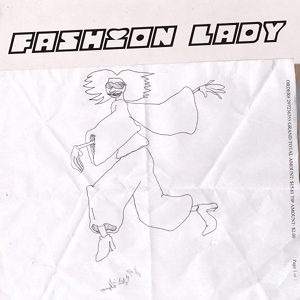Gobby Fashion Lady
Gobby is unburdened. He’s not lazy or singularly egotistical, just calmly unaffected by the need […]

Gobby is unburdened. He’s not lazy or singularly egotistical, just calmly unaffected by the need to impress—or perhaps even express—through his music. His label, UNO, says that he uses his music “to ward off irritability and paranoia,” and indeed, there’s a healing sensibility subtly present throughout Fashion Lady. Sections of extended riffing on a single theme last just longer than expected, and the result is akin to being lulled into a Theta state, the unconscious mind opening slightly at the behest of Gobby’s brand of rustic, pharmaceutical techno.
His deftness with texture is especially impressive, making each drum and synth sound his own through even-handed manipulations. Yet Gobby doesn’t wear this as a badge of honor; the soundsmithing comes across more like the results of playful experiments than obsessive nights spent dialing in each element. Album opener “Krylon Surf Magix” is a resolute, driving piece centered around a one-bar bassline loop and a four-to-the-floor feel. The song’s meandering accents of chorusing and panning synths with muted bits of noise and affectation bring to mind moments of AFX’s Analord series. “Lect Hom” digs deeper into this side of his sound, picking up the tempo and flavoring a rush of deep warehouse rave with detuning synth stings and hoovers above a wavering bassline—it’s Speedy J meets GHB.
Elsewhere on Fashion Lady, Gobby balances these more audacious arrangements with tribal and hypnotic works. “Healing Factor,” on its surface, is four-and-a-half minutes of a single loop—a battle record heard through a radio dunked in the bathtub—but Gobby’s textural chops weave enough dynamism throughout the proceedings to make the jump from extended interlude to full-fledged work. Similarly, “VB News” is based around a single, off-phrase looping of a screwed talking drum, but the constant microscopic changes in the track give it a sense of progression, making it heady and entrancing.
“Rashe” marries these extremes with a running arpeggiated bassline and long, slow blends of percussion, occasionally kicking into an abstruse techno flex-out, but never bearing down with a full-on, thunderous punch. Instead, Gobby goes deeper, extending the tension for almost the entire track. If Pete Swanson’s more techno-centric deconstructions were extracted from the field of noise he laces them in, “Rashe” would be the skeleton left behind.
Fashion Lady is personal music, though it’s bolstered by the frameworks of a few familiar, established genres. Gobby truly seems to make music for himself first and foremost, but that’s exactly what makes his sound work; it’s at the confluence of indulgence and honest inspiration.

